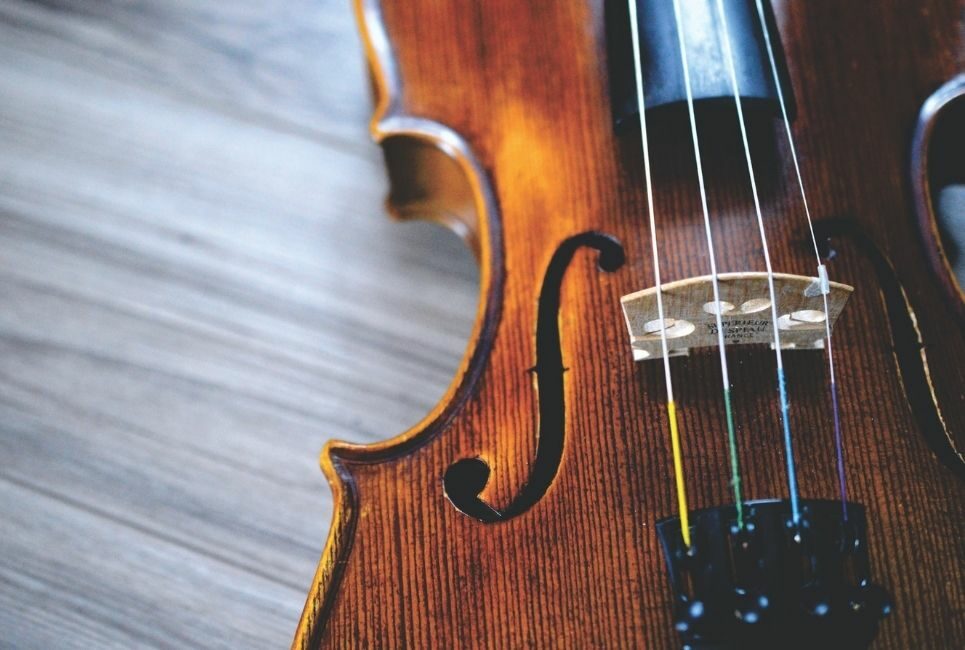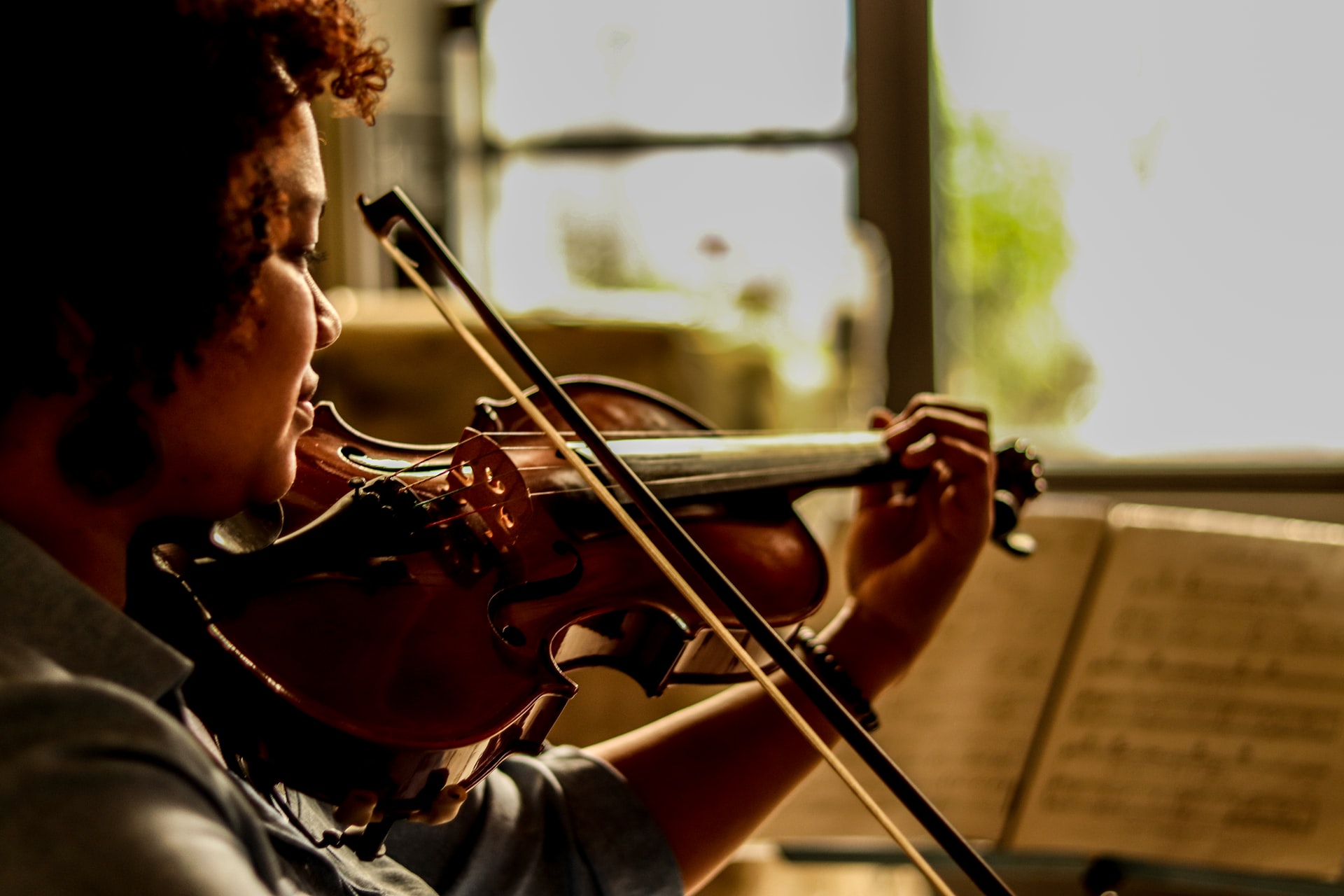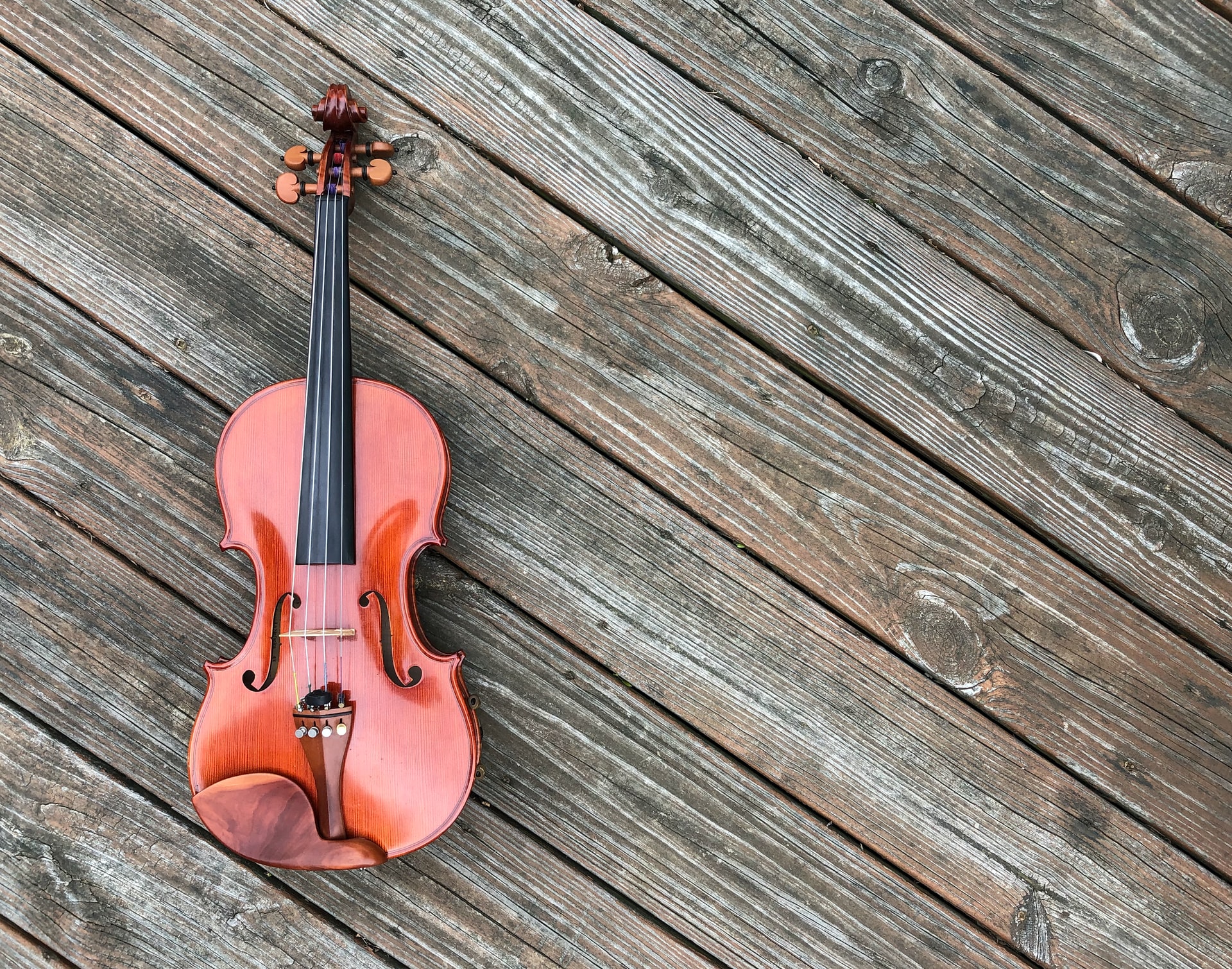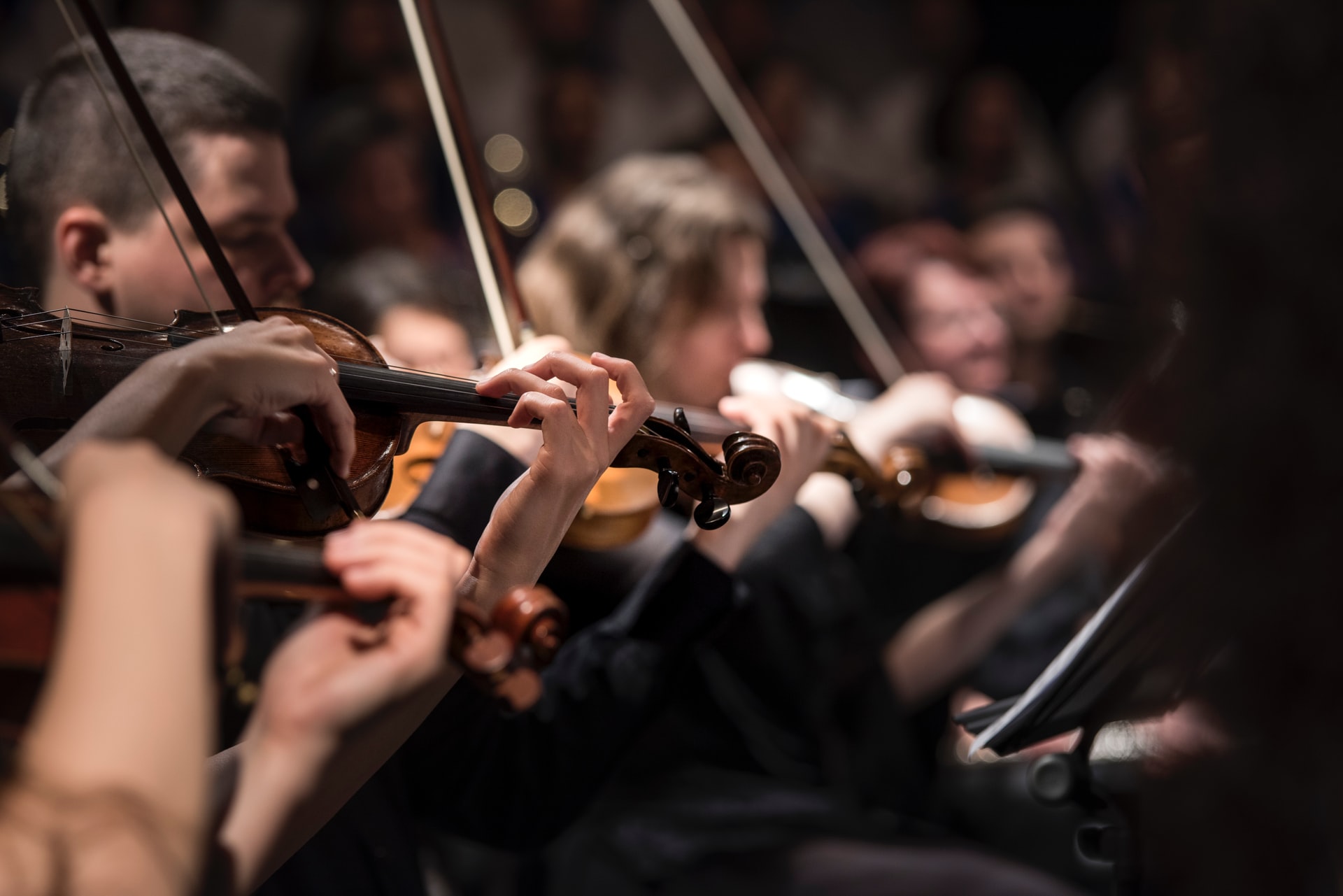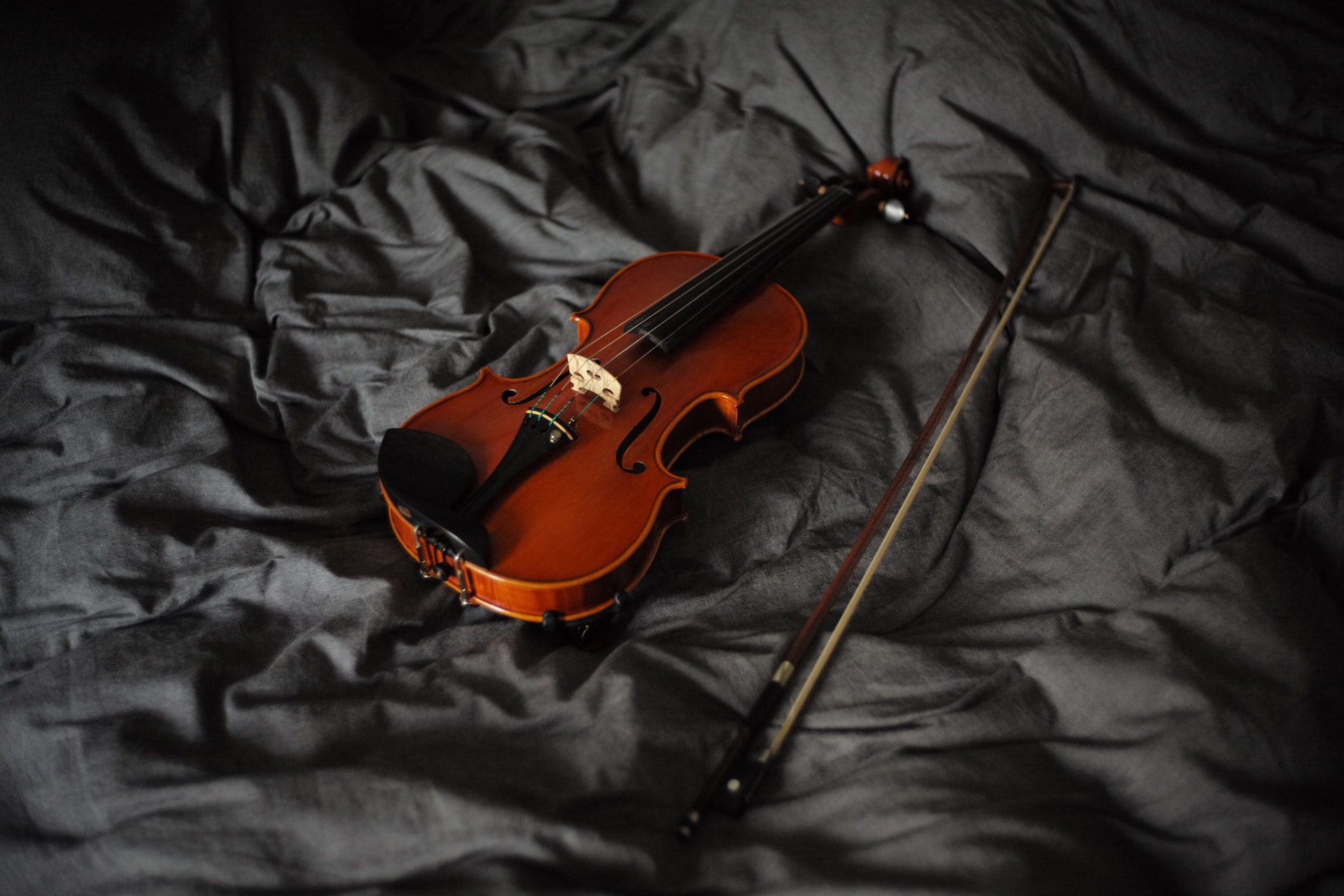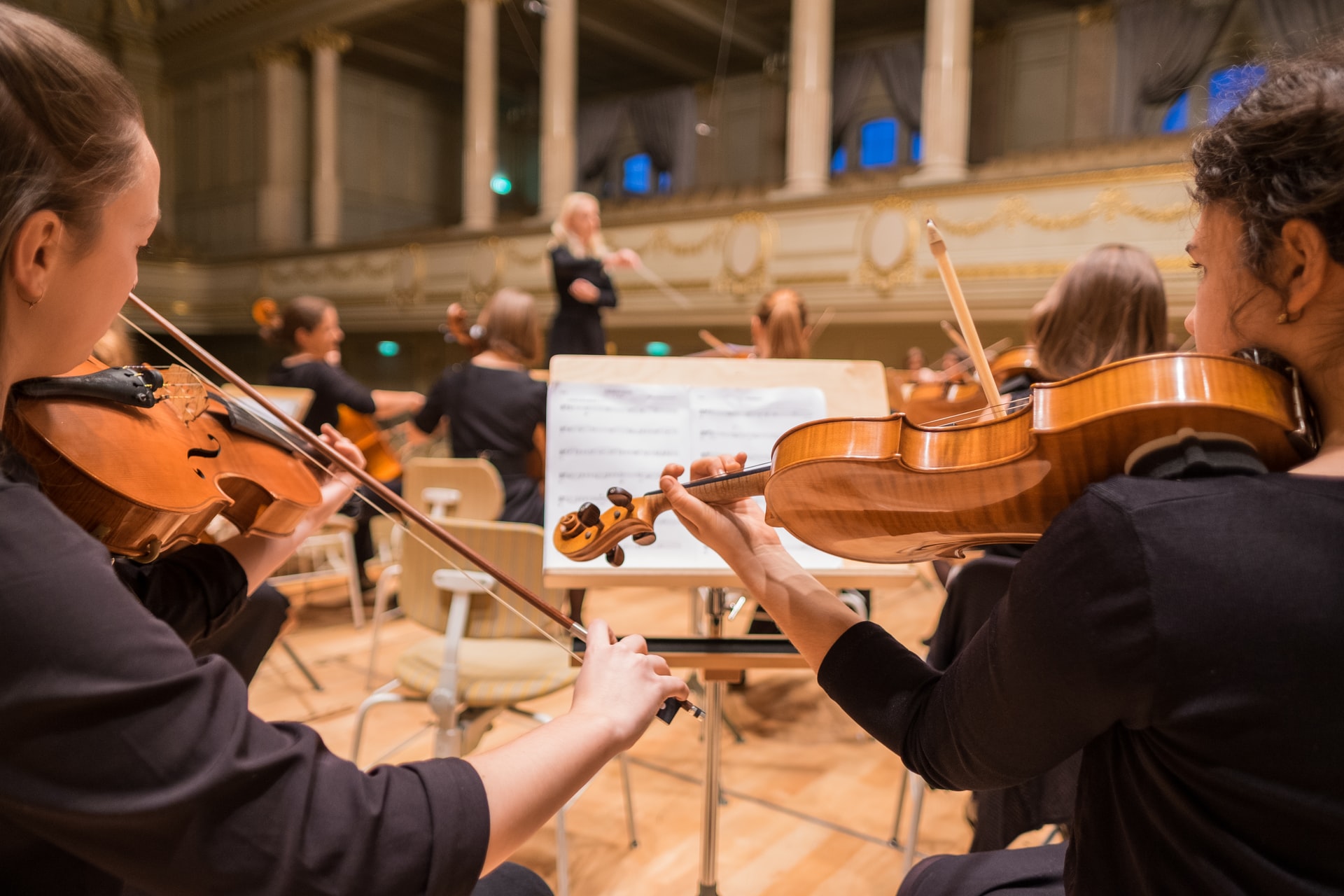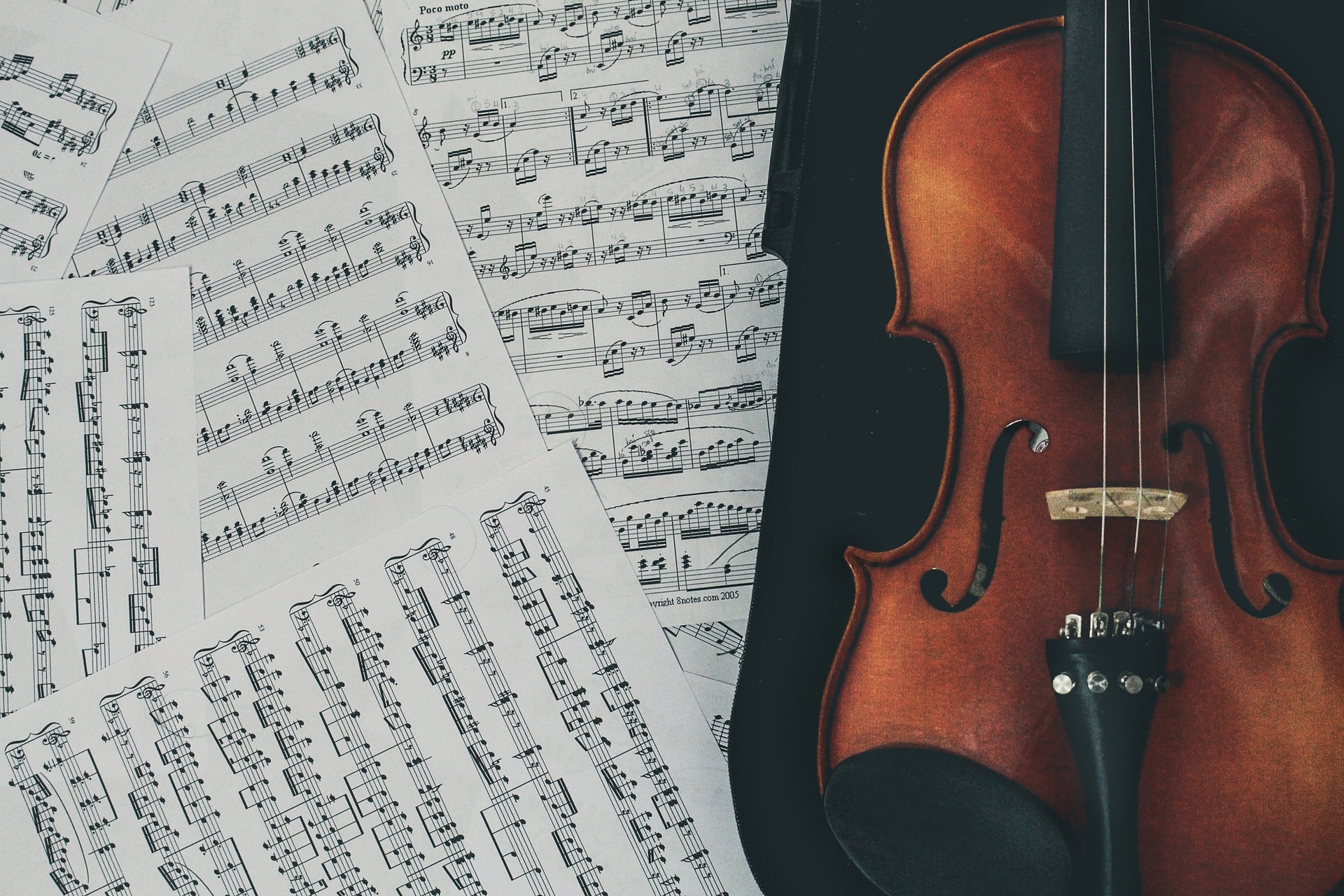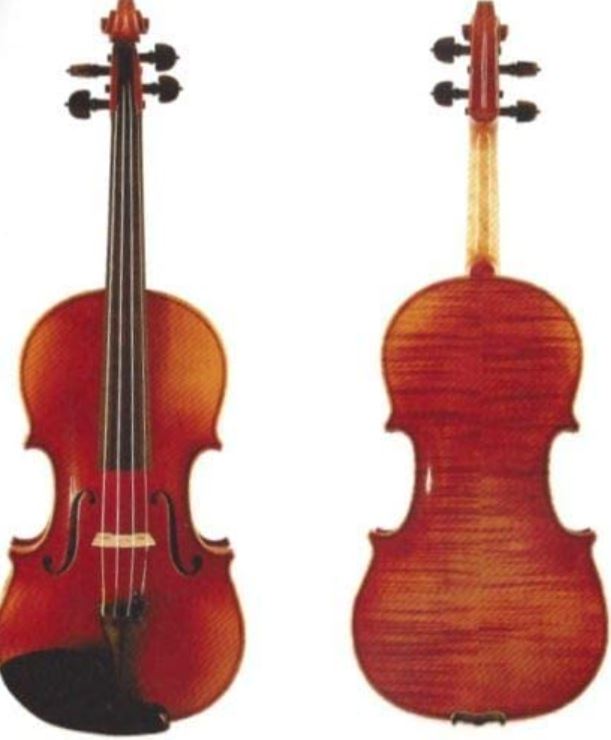- Best Violin Stand Options Guide - May 26, 2022
- Best White Violin Options - May 22, 2022
- How to Find the Best 7/8 Violin - May 19, 2022
I will always remember when I bought my first violin… it was a magical time full of musical inspiration, exciting shopping trips, and not to mention the rigorous practice that followed. However, it wasn’t all sunshine and daisies – deciding on which violin to purchase was a bit of a nightmare, and one of the main reasons for this was sizing.
I was only a teenager at the time, and every full-sized violin felt slightly too big for me – I couldn’t hold it comfortably, and that was when a shop assistant recommended that I check out 7/8 violins. This was an absolute game-changer, it made such a difference!
Whether you’re reading this with no idea what 7/8 means or you’ve already decided that it is the size for you, I’m aiming to help you figure out how to find the best 7/8 violin so that you can have the most comfortable practice experience. If that sounds like something you’re looking for, read on to find out more!
Bottom Line Up Front: A good 7/8 violin should be comfortable to play, be hand-carved out of high-quality tonewoods, and have an excellent balance between cost and quality. A prime example of this is the D Z Strad Model 120 7/8, a beginner 7/8 violin that ticks all of these boxes along with coming bundled with everything a beginner violinist needs to get started.
What Is a 7/8 Violin?
To start things off, let’s clear the air a bit as some of this jargon can be confusing. 7/8 is the size given to violins that are just slightly smaller than a full-sized violin. The body will generally measure between 345 to 349 millimeters, and the length will be around 575 millimeters. To put things into perspective, 4/4 violins (otherwise known as full-sized or ‘standard’) measure up at around 360 millimeters for the body and 600 millimeters overall.
As a result of this slightly smaller size, they are generally designed for people who want to play with full-sized instruments, but simply do not feel comfortable doing so. A classic example was me as a 14-year-old boy – my violin tutor at the time relentlessly told me that I needed to get a full-sized 4/4 violin and that I’d never get accepted by an orchestra if I didn’t. What a load of rubbish – 4/4 violins were impractical for me to perform with, and when I was finally recommended a 7/8, everything became a whole lot easier.
Whilst 7/8 violins are certainly great options for teenagers and young adults, that doesn’t mean they are not appropriate for adults. The consensus regarding the size is that if your arm length is between 580 and 615 millimeters, 7/8 violins are the optimal size. I think it’s best to take age out of the equation here because everyone has different bodies, and I know plenty of violinists who are smaller than the average person and thrive when performing with 7/8 violins.
Is a 7/8 Violin As Good As A Full-Sized Violin?
Before we move on to discuss the elements that you should be looking for in a 7/8 violin, I just wanted to clear up a common misconception – that 7/8 violins are not as good as full-sized violins. This follows directly from what I was just talking about. Remember when I mentioned that my violin tutor was determined to make me use a 4/4 violin? Well, believe it or not, this is actually a very common attitude in the orchestra scene, with many people believing that the only violin worth playing professionally is full-sized.
You can probably already guess my opinion on this matter – what a load of trash! I’ve got good news for you – the size of a violin should have absolutely no effect on the tone, on the amplification, or any timbral element of the instrument – period. Sure, tiny violins for children such as 1/8 violins will sound slightly more minute than a 7/8 or 4/4 violin, but there will be no noticeable difference between a 7/8 instrument and a 4/4.
I honestly think this whole attitude is very sad, as it can demotivate people from learning the instrument. I’ve had friends who are grown adults and under 5 feet in height who, despite having a passion for classical music, have stayed away because they claim they are ‘not tall enough’. Thankfully I’ve always managed to convince them that this is not true, and here I am trying to do the same for you. Now, with all that out of the way, let’s move on!
What Makes An Excellent 7/8 Violin?
If you’ve made it this far, you should now understand exactly why someone might need to use a 7/8 violin over a 4/4, and why there is absolutely nothing wrong with this. Now, let’s dive into some of the juicier details on what makes a 7/8 violin a decent purchase. If you think that this sizing may be for you, make sure you scrub up on the following information!
Comfort
The first thing that you should ensure if you are looking into purchasing a 7/8 violin is to ensure that you are comfortable playing the instrument. You may think that I am starting to sound like a broken record, but it’s so important. You would not believe the number of people that I know who have purchased 7/8 violins or violins of any size for that matter, only to feel incredibly uncomfortable when playing them. This prevented them from truly feeling the flow of the music when performing, and in some cases, stopped them from practicing the instrument altogether!
When you test out a 7/8 violin, you should be able to hold the violin between your chinrest with ease. In undeniable that if you are a complete beginner, it is going to feel a bit strange and uncomfortable. However, you shouldn’t have any trouble dealing with the weight of the instrument itself. It should be light to hold, and you certainly shouldn’t be feeling strained or cramped when doing so.
Equally important to the feeling of holding the instrument is navigating the fingerboard. This is arguably the most important element of playing the violin – every musical note can be found at a different point within the fingerboard, and it’s going to be your job as a violinist to smoothly navigate across all of them. However, if you’ve purchased a violin that is too small, too big, or generally uncomfortable for you, you are not going to be able to do this. This may not put you off playing the instrument entirely, but it may well limit your violin abilities.
Overall, comfort should always come first when you are choosing a 7/8 violin. Trust me – no amount of money, tonewood quality, or accessories can save you if you are unable to play the violin comfortably.
Cost Vs. Quality
Right, I think I’ve emphasized the importance of comfort and sizing enough at this point, so let’s talk about something different – cost vs quality. This is a ratio that I think is essential to think about when purchasing any instrument, and the violin is no exception.
It’s undeniable that in life, money buys you quality – that’s just a fact of life. Whether it’s a car, a watch, or a house, the money that you spend will generally be equal to the value you get out of the purchase. This is the case for the violin – the most gloriously rich and amplified violins cost an absolute fortune due to their woods being aged for decades, being acoustically treated, and being sourced from historic locations.
However, none of this matters if you are a beginner. If you’re looking to purchase your first 7/8 violin, it’s highly unlikely that you are going to recognize the difference between a beginner violin and a vintage violin – it all sounds the same really until you’ve been playing for years. For this reason, I think it’s important to consider your budget first and find something of a decent quality within that price range.
You are going to want to ensure that the intonation is right, that the instrument is durable, and that it sounds good. However, as long as that is the case, I think it’s a bit silly spending thousands of dollars on a beginner violin, because who knows, you might not enjoy learning the instrument!
Materials
Speaking of quality, let’s outline one of the most important contributing factors to a high-quality violin – the materials that build the instrument. If you ever find an extremely expensive violin on the market, there are going to be two or three materials in common – spruce, willow, and ebony. The first two are what are known as tonewoods, woods that are exceptional at projecting beautifully resonating frequencies. Ebony on the other hand is sourced from small and slow-growing trees that result in it having a low supply and high demand, used to produce the fingerboards, tuning pegs, and other fittings on high-quality violins.
If you are an intermediate or professional violinist who is looking to upgrade from a beginner violin to a higher quality 7/8 violin, these are the materials that you are going to want to look out for. However, as I mentioned earlier in regards to cost vs. quality, if you are a beginner violinist, there is no point in splashing out on such luxuries – you’re unlikely to notice the difference, other than how it looks.
With all that being said, you shouldn’t completely cheap out on the materials either. If you find a 7/8 violin that only costs $50, you’re going to get what you paid for, and that is probably going to be plastic. You don’t want to be playing a plastic violin, it’s going to sound awful. There’s no shame in sticking to your budget and avoiding the expenses of spruce, willow, and ebony, but it’s going to be wise in the long run to find something made out of a cheaper wood, not a synthetic plastic.
Accessories
The last thing that I would consider to be essential when purchasing a 7/8 violin is only applicable to beginners – so, if you are an intermediate violinist looking for an upgrade, this section is probably worth skipping over. The reason for this is that beginner violinists will need a variety of different accessories to truly start learning the instrument, and to buy a 7/8 violin without such accessories could prevent them from getting started straight away.
When talking about violin accessories, the first things that come to mind are strings and bows. It is very common for violins to come with these accessories, with the strings already attached to the instrument and the bow bundled as an ‘outfit’. This is since you simply could not play the instrument without them!
However, there are more accessories that beginners should be looking out for – you’ll need a violin case for transportation, a violin stand for your practice room, a tuner to tune the strings, violin rosin to optimize the resonance of strings, a music book to learn from… the list goes on! Whilst it’s relatively rare for a violin to come bundled with all of that stuff, most violin sellers will stock such inventory. At the very least, when purchasing your 7/8 violin, you should ensure that you have browsed the seller’s website for such accessories and ensure that you are kitted out. Trust me, the last thing you want is for your violin to arrive, only to not have the right resources to get started!
My Top 3 Recommendations for 7/8 Violins
Right – you should now have everything you need to know in regards to purchasing your first beginner or upgrade 7/8 violin! To make things a little easier for you, I’ve decided to compile the following list of three 7/8 violins that have caught my eye over recent years. I’d highly recommend you investigate them, as I’ve made sure that each example follows the criteria listed in this guide!
Eastman Westbury Violin 7/8
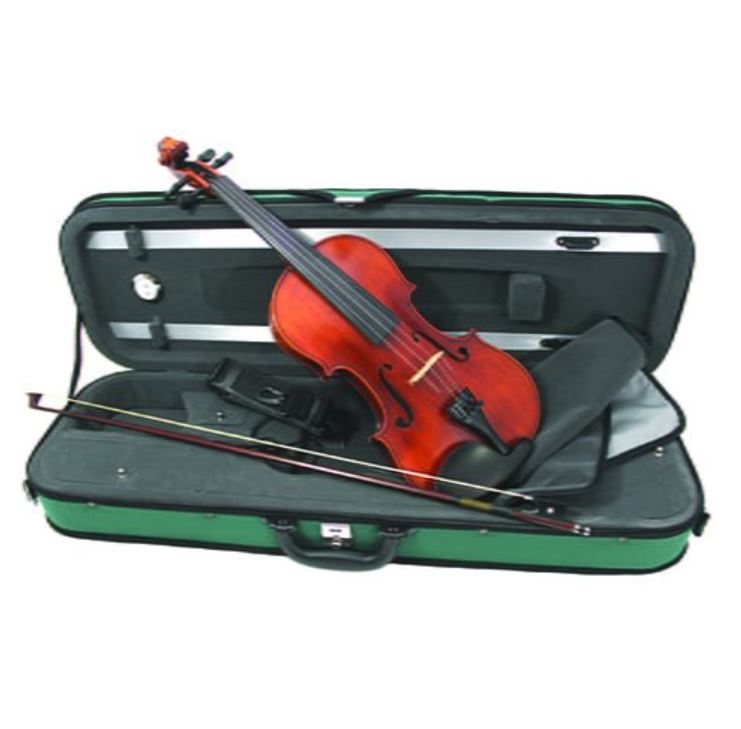
The first 7/8 violin that I simply had to mention is from none other than Eastman Strings. If you’re reading this guide as an intermediate violinist, I would be amazed if you have never heard of Eastman Strings. They are well known for producing some of the finest yet most reasonably priced violins in the world, and I couldn’t recommend them enough. This instrument in particular is the Eastman Westbury, a violin that is manually set up by Eastman’s professional luthiers, a feature that makes a massive difference in the unique timbral qualities of a violin.
Perhaps the most important feature of this cracking violin is the fact that it comes with ebony fittings including the fingerboard, the tuning pegs, and the chinrest. This is very rare for a violin for such a reasonable price! It does compromise on the tonewood quality slightly using Maple for the majority of the body, but there are elements of spruce in there too.
In addition to all those high-quality features, the instrument also comes as an outfit complete with a bow and a hard case. It’s an overall impressive bundle considering the high status of Eastman Strings, and if you can afford the price (which is slightly above entry-level), it is going to pay off massively.
Pros
- Set up manually by Eastman’s professional luthiers
- Ebony fingerboard, tuning pegs, and chinrest
- Very good value for money
- Bundled with a bow and hard case
- Eastman Strings’ reputation is impeccable
Cons
- May be slightly too expensive for some beginner budgets
- Doesn’t come with a shoulder rest or rosin
D Z Strad Model 120 7/8
The next 7/8 violin that I wanted to list comes from a brand that I love very similarly to Eastman Strings – it’s the D Z Strad Model 120. Coming in at a very similar price to the previously mentioned violin, the quality of this instrument is once again high for the price. It’s fitted with a spruce top, maple back and sides, and an ebony fingerboard, and is even hand-carved and hand-adjusted. Even the Eastman String example wasn’t hand-carved!
In addition to these high-quality features, the instrument comes with bundled accessories that I must say beat the Eastman option. It includes a case and a bow much like the Eastman, but also includes a shoulder rest and string rosin! It’s a truly gorgeous violin that I would highly recommend to both beginner and intermediate violinists. I must say that I think I prefer this option to the Eastman alternative, and that’s saying something!
Pros
- Made from hand-carved spruce and maple
- Hand set-up by D Z Strad’s luthiers
- Ebony fingerboard
- Bundled with a case, bow, strings, rosin, and a shoulder rest
- A very reasonable price for the quality
Cons
Neuner & Hornsteiner Petite Violin 1870 7/8
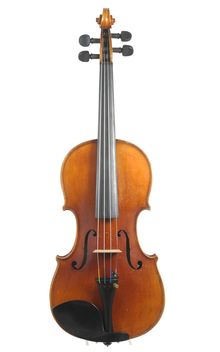
Throughout this guide, I’ve talked a lot about how it isn’t necessary to purchase an expensive vintage violin if you are a beginner, as the differences will be hardly noticeable. However, I’ve decided to include something a bit fancier for any violin connoisseurs who may be reading this guide – after all, you may be an intermediate or even professional player looking to upgrade.
If that’s the case and you’ve got some serious money saved up, you should look no further than the Neuner & Hornsteiner Petite Violin, dated back to 1870. It’s pretty rare to find 7/8 violins that are this old so this is a truly special product. Believe it or not, despite its age, this violin is somewhat affordable valued currently at just over $2,500. The tone is known to be bright, mature, clear, and rich in overtones, and this has a great deal to do with the finely aged and moderately grained spruce that it is made of.
It’s a truly fine instrument that has been preserved in immaculate quality. There’s no doubt that it’s a bit pointless for a beginner to purchase this 7/8 violin, but if you’re a pro and have been saving up, you won’t want to miss checking this out!
Pros
- Produced back in 1870
- It’s rare to find a vintage violin in 7/8
- Comes with a money-back guarantee
- Made from finely aged spruce
Cons
- A very expensive option
- Most of the high price comes from the fact that it is considered vintage
- Does not come bundled with any accessories
FAQ
Before we round things off, I’ve decided to provide some quick answers to some of the most frequently asked questions that I heard in my practice rooms about 7/8 violins. I’ve covered all of this information throughout the guide, but let’s go over them one more time just to be sure you understand
Answer: 7/8 violins should have a body length of between 345 to 349 millimeters, and an overall length of around 575 millimeters.
Answer: 7/8 violins are best suited to teenagers and smaller adults, but anyone with an arm length of between 580 and 615 millimeters should find them comfortable.
Answer: If you are a beginner violinist looking for a 7/8 violin, you should seek something comfortable, good value for money, comes bundled with all the essential accessories, and is not made out of cheap synthetic materials.
Answer: Absolutely – there is no major difference in quality between 7/8 and 4/4 violins, other than the size.
Final Thoughts
Well, that brings us to the end of this guide on how to find the best 7/8 violin! I hope that it has benefitted you because if I had this guide back when I was first looking for a 7/8 violin I would be thrilled! If there’s one 7/8 violin I would recommend out of all of the options here, it’s the D Z Strad Model 120 7/8!
Always remember to test violins out in music stores before you purchase them, and look out for those four criteria. Most of all, don’t forget that there is nothing wrong with choosing a 7/8 violin as an adult over a 4/4 violin. If you practice hard, there is nothing that can get in your way. Good luck!

